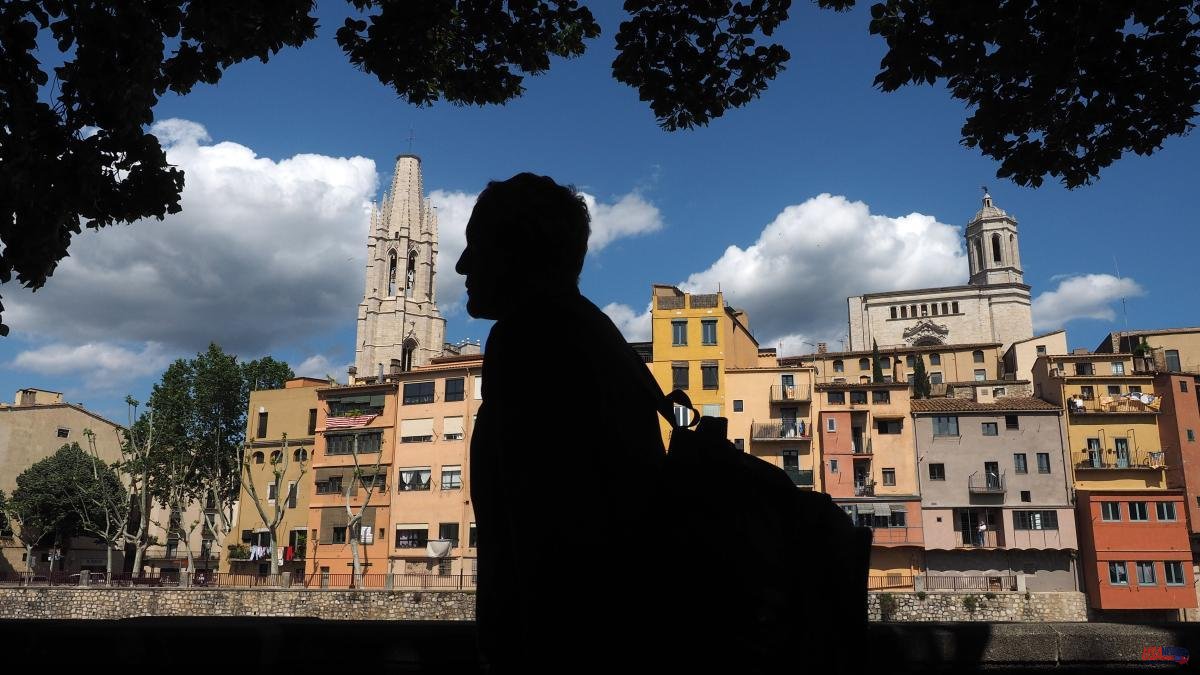Girona limits a little more the number of homes for tourist use that it may have. The new government team, formed by Guanyem, Junts and ERC, has set a maximum limit of 4% on the total number of homes in the city.
The reduction of this type of housing, which until now was 15%, is the main novelty of the provisional approval of the specific modification of the General Urban Planning Plan (PGOU) that will be approved in the plenary session next Monday.
The measure, however, does not affect properties of this type that already exist in the Barri Vell and Mercadal sectors, the area that accumulates the most tourist apartments. Of the 763 homes of this type in the city, 480 are located in this central sector, which will not be able to grow with new licenses unless some of the existing ones are deregistered.
Limiting housing for tourist use was one of the agreements reached by the new government team, formed by Guanyem Girona, Junts and ERC. The rule also includes some changes with respect to the previous regulation, which Junts and ERC approved in November of last year.
For example, the exception is eliminated that stipulated that developers or investors who rehabilitated entire residential buildings by incorporating an elevator could allocate the first floor to housing for tourist use, even if the 15% limit was already exceeded in that area.
Furthermore, the global count of permitted tourist flats also includes tourist apartments and shared-use homes, something that did not happen until now. What does not change is the concentration for each neighborhood, which was 15% of the total.
For practical purposes, only the sector comprised by the Barri Vell and Mercadal exceeded, and by very little, that ratio. At a great distance there are neighboring neighborhoods such as the area of Calle del Carme and Vistalegre or Sant Daniel.
If the currently existing housing for tourist use is extrapolated over the total housing in the city, the figure ranges between 2.4 and 2.5%, still far from the maximum figure of 4% allowed.
For practical purposes, Girona could still grow by around 2,000 more homes, although the Barri Vell is for now shielded from any growth. Licenses will only be given in this area if the current 15% is lowered.
According to the Councilor for Ecological Transition and Urban Transformation, Cristina Andreu, setting the limit at 4% is appropriate because "it means more than doubling the floors that currently exist and gives the different neighborhoods room for growth."
According to the mayor, the new regulation will allow “reducing tourist pressure and promoting neighborhood coexistence” in areas such as Barri Vell, where a large part of this type of housing is concentrated.
The councilor for Urbanism of Proximity, Lluís Martí (Junts), points out that this regulation will not affect the tourist activities communicated before the suspension that meet the requirements set by the tourism regulations.
The mayor of Girona, Lluc Salellas, highlighted that before completing one hundred days of municipal government, the City Council has acted on one of the issues that generated the most debate in the city. The final approval of the PGOU will be the responsibility of the Generalitat.













